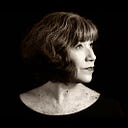Member-only story
My Very First Milky Way Photos
And other fun stuff
A lot of planning went into this. I scheduled a trip out west around the new moon — when the sky is the darkest — with the intention of capturing the Milky Way. Beginning weeks beforehand, I researched what equipment I needed, and how to take the photos.
First, I bought the equipment. I read articles, watched YouTube videos, and talked with friends to find out what I needed. I bought a tripod (lighter than the one I had), a stone bag (to weigh down the tripod), a red headlamp, and a wider angle lens than I owned (a friend convinced me that 24mm was not wide enough).
(The following include affiliate links below the image and in text. I can earn money on purchases made through these links)
I decided upon this tripod, since it was affordable, and lightweight.
It was suggested that I purchase a stone bag, which attaches to the tripod and then rocks or weights can be added to stabilize the tripod during long exposures.
Being able to see in total darkness is essential, and a red light is better for night vision (and is apparently less attractive to bugs). So I got this…
